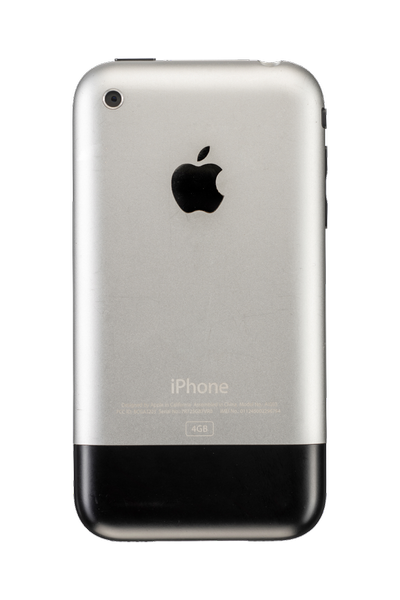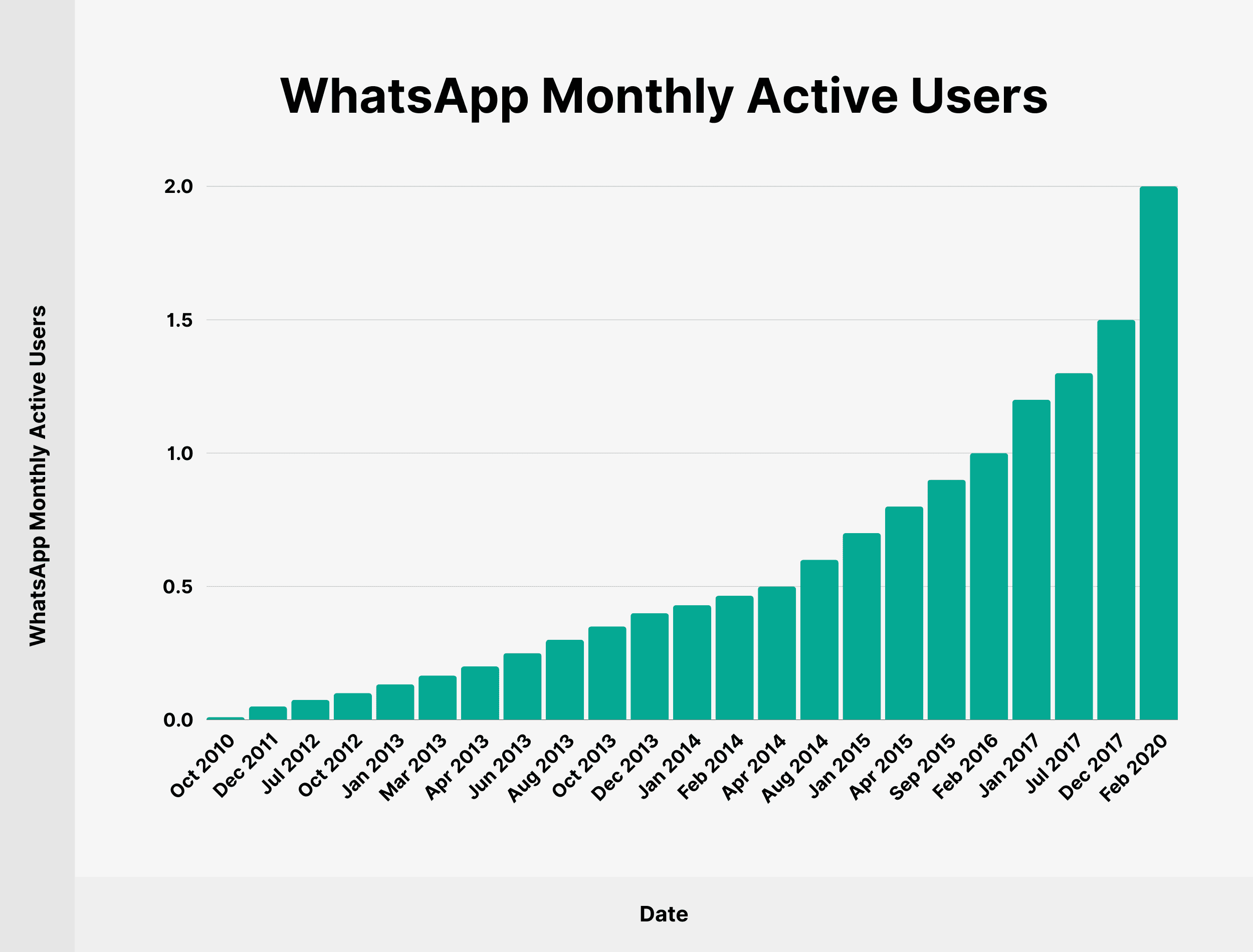

Asad Khan
2025-03-23 · 8 min read
How to Create the Next Billion Dollar App
The mobile app gold rush isn't over—it's just getting started. Learn the secret formula behind the world's most successful apps and how you can position your idea to become the next unicorn in the app economy.
How to Create the Next Billion Dollar App
We're living in an era where a small team with the right idea can build an app that reaches billions of people and generates astronomical revenue. From WhatsApp's $22 billion acquisition to Candy Crush's mind-boggling daily active users, the stories of app success continue to inspire entrepreneurs worldwide. But what does it really take to create the next billion-dollar app in today's hyper-competitive marketplace?
The App Store Revolution: How It All Began

The first iPhone was released on June 29, 2007. By today's standards, it was incredibly basic—you couldn't record video, there was no App Store, and all you could do was browse the web, listen to music, make calls, and take photos of your pets.
What's fascinating is that Steve Jobs, known for his visionary thinking, never initially intended to release the iPhone SDK to the public. Apple's original stance was for developers to build web apps for their mobile Safari platform, not native applications.
The iPhone was revolutionary—a complete paradigm shift in an era dominated by Nokia's button-filled devices. But what truly changed everything was what came next.
In March 2008, Apple released the first public iPhone SDK, allowing developers to create and submit applications to the newly conceived "App Store." Android followed suit, launching its first device in September 2008 with Android Market (later rebranded as Google Play Store).
Gold Rush: The Early App Store Days
The App Store became an instant phenomenon. Just as iTunes had revolutionized digital media distribution, the App Store created an entirely new economy for software. Apple's review process was strict, taking 5-10 days for approval or rejection, but within months, they reached 20,000 apps—a figure that astonished even Steve Jobs.
Those early days were the digital equivalent of a gold rush. Developers worldwide flocked to the platform, and iPhone users couldn't download apps fast enough. There were legendary stories of overnight success—simple novelty apps like the infamous "iFart" generating hundreds of thousands of dollars in just days.
Everyone was hungry:
- Users craved new experiences
- Developers sought new opportunities
- Apple discovered an unexpected revenue stream
First Year App Store Downloads: 1 Billion+ (Reached in just 9 months after launch)
Today's App Economy: Harder but Bigger Than Ever
Fast forward to today, and the numbers are staggering. The App Store now hosts over 2 million apps with more than 200 billion cumulative downloads. Apple has paid developers over $320 billion since the App Store's launch—a figure that dwarfs the GDP of many nations.

But beneath these impressive statistics lies a challenging reality for app entrepreneurs:
- 98% of App Store revenue goes to just 2% of apps
- The average user actively engages with only 28 apps monthly
- 75% of users' app time is spent on their top 4 applications
- Major categories are dominated by tech giants with virtually unlimited resources
In 2024, launching a new app means competing against established behemoths that have already captured both real estate on users' phones and their precious attention. Some of these apps are addictive social networks, some are essential utilities, and others are backed by billions in marketing dollars.
You're up against formidable opponents. But that doesn't mean it's impossible.
The difference between the entrepreneurs behind billion-dollar apps and everyone else isn't just having great ideas—it's executing them relentlessly.
The Success Stories That Defy Logic
Candy Crush: The "Small Project" That Generated Billions
When King Digital Entertainment assigned six developers to create Candy Crush Saga in 2012, they thought it would be a minor release. The team spent just three months on development and actually expected it to fail.
Released before Christmas, when the team returned from holiday break, they thought their analytics were broken—the engagement numbers were completely off the charts.
Little did they know this "small project" would become one of the highest-grossing mobile games in history, generating over $1.5 billion in annual revenue at its peak and being played more than 1 billion times daily.
Key Stats:
- Monthly Active Users: 250M+
- Annual Revenue: $1.5B+
What's even more remarkable is King's journey. The company struggled for 11 years, experimenting with web games and Facebook apps before finally striking gold on mobile. Four of the five founders persisted through those difficult years—the fifth sold his stake for £2 million before the company's eventual $5.9 billion acquisition by Activision Blizzard.
WhatsApp: From Status Updates to $22 Billion
WhatsApp began as a simple status update application created by Brian Acton and Jan Koum, both former Yahoo engineers. Frustrated by advertising-based business models, they pivoted to messaging and took a contrarian approach to monetization.

With the iPhone not yet available in Ukraine (where Koum was born), they initially built for BlackBerry and saw 200,000 organic downloads in just one week. Their commitment to a clean, ad-free experience and focus on reliability across poor network conditions helped them dominate global markets where competitors couldn't gain traction.
Today, WhatsApp processes over 100 billion messages daily—more than 50% higher than the entire world's SMS volume. Facebook's $22 billion acquisition in 2014 valued the company at nearly $42 per user, despite minimal revenue at the time.
Uber: The Rideshare Revolution No One Believed In
When Uber launched in 2009, industry experts scoffed. Convincing strangers to get into other strangers' personal vehicles seemed absurd, and traditional taxi companies dismissed it as a passing fad.
Yet Uber demonstrated unprecedented growth, expanding to 45 countries and 225 cities in just a few years. By solving real pain points in urban transportation—unreliable availability, payment friction, and poor rider experience—they created what's now a $120+ billion company with over 5 million drivers worldwide.
Last year alone, Uber facilitated more than $36 billion in bookings. Not bad for an idea most people thought would never work.
The Common Thread: Each of these billion-dollar apps began with a founder who saw problems others didn't recognize or were unwilling to solve. They all faced skepticism, made multiple pivots, and persisted when others would have given up.
The Billion-Dollar Formula: What These Successes Have in Common
Studying these unicorn apps reveals consistent patterns:
1. 10X Better, Not Just Incrementally Improved
Billion-dollar apps don't just improve existing solutions—they're at least 10 times better in some critical dimension. WhatsApp made messaging 10X more reliable internationally. Uber made getting a ride 10X more convenient. TikTok made content creation 10X more accessible.
Ask yourself: Is your app idea truly 10X better than existing solutions in at least one important way?
2. Perfect Timing in Market Evolution
Successful apps often emerge at critical inflection points in technology or user behavior. Instagram launched just as smartphone cameras became good enough for everyday photography. Zoom perfected video conferencing right before remote work exploded.
The question isn't just whether your idea is good—it's whether the world is ready for it right now.
3. Network Effects and Viral Growth Mechanics
The most valuable apps create powerful network effects where each new user makes the service more valuable for existing users. Facebook, Uber, and Airbnb all exemplify this principle.

Additionally, they build viral growth mechanics directly into their product experience. WhatsApp grew because users had to invite friends to message them. Clubhouse generated FOMO with its invitation-only model.
4. Solving Real, High-Friction Problems
Look at any billion-dollar app, and you'll find it solves a genuine, high-friction problem. Uber eliminated the uncertainty and frustration of hailing taxis. Doordash removed the friction from food delivery. Robinhood made investing accessible to non-professionals.
The more painful the problem, the more valuable the solution.
5. Persistence Through Multiple Pivots
King tried dozens of games before Candy Crush. Twitter began as a podcasting platform called Odeo. Instagram started as a check-in app called Burbn.
Nearly every billion-dollar app story includes significant pivots based on user feedback and market realities. The original idea is rarely the winning one.
Ideas are a dime a dozen—until you act on them. Then they become priceless.
The Market Today: 4.5 Billion Smartphones and Counting
Today, over 4.5 billion people worldwide own smartphones—that's more than half the planet's population with a powerful computer in their pocket. This unprecedented access to potential users makes our era the most opportunity-rich in entrepreneurial history.
Global Smartphone Users: 4.5B+ (More than half the world's population)
Despite the challenges of competition and discovery, the potential audience for your app is larger than any entrepreneur in history could have dreamed of reaching.
Your Billion-Dollar App Journey Starts Now
What idea keeps you up at night? What problem frustrates you that millions of others might share? What innovation are you convinced should exist but somehow doesn't?
As the saying goes, ideas are a dime a dozen—until you act on them. Then they become priceless. The difference between the entrepreneurs behind billion-dollar apps and everyone else isn't just having great ideas—it's executing them relentlessly.
This is the golden age of entrepreneurship. Never before has it been possible to create something that could reach billions of users with such minimal initial investment. The tools, platforms, and knowledge to build world-class applications are more accessible than ever.
The world is craving the next app that will disrupt everything we thought we knew about how we live, work, and connect. This could be you—your idea could become the next WhatsApp, the next Uber, or the next viral phenomenon.
Ready to start? The best time to begin working on your app idea was yesterday. The second best time is right now. Don't wait for perfect conditions—they don't exist.
You Don't Need to Do It All Yourself
Here's the best part: you don't need to be a technical genius to create the next billion-dollar app. You don't need to know how to code. You don't need to be a design virtuoso. You don't need to be a marketing wizard.
What you need is a clear vision, an understanding of your users' problems, and the persistence to keep going when others would quit.
The most successful app founders didn't build their empires alone. They assembled teams, found partners, and leveraged expertise from others who complemented their strengths.
With the right development partner who understands how to build native apps based on industry best practices and guidelines, your vision can become reality. Your focus should be on the problem you're solving and the unique value you're creating—not getting lost in technical details.
The next billion-dollar app is waiting to be built. Why shouldn't it be yours?
Key Ingredients for Billion-Dollar Apps
Solve a genuine problem: Address pain points that affect millions of users
Design for network effects: Create mechanics where growth accelerates as user numbers increase
Focus on retention: Acquisition gets users in the door, but retention builds empires
Build for scale from day one: Architectural decisions made early can limit or enable massive growth
Be prepared to pivot: Listen to users and be willing to change direction when the data speaks
Billion-Dollar App Metrics
WhatsApp: 100+ billion messages sent daily, acquired for $22 billion with just 55 employees
Candy Crush: Over 250 million monthly active users, $1.5B+ annual revenue at peak
Uber: 5+ million drivers, operating in 10,000+ cities, $31 billion annual revenue
TikTok: Reached 1 billion users faster than any other platform, over 1 billion downloads in 150+ markets
